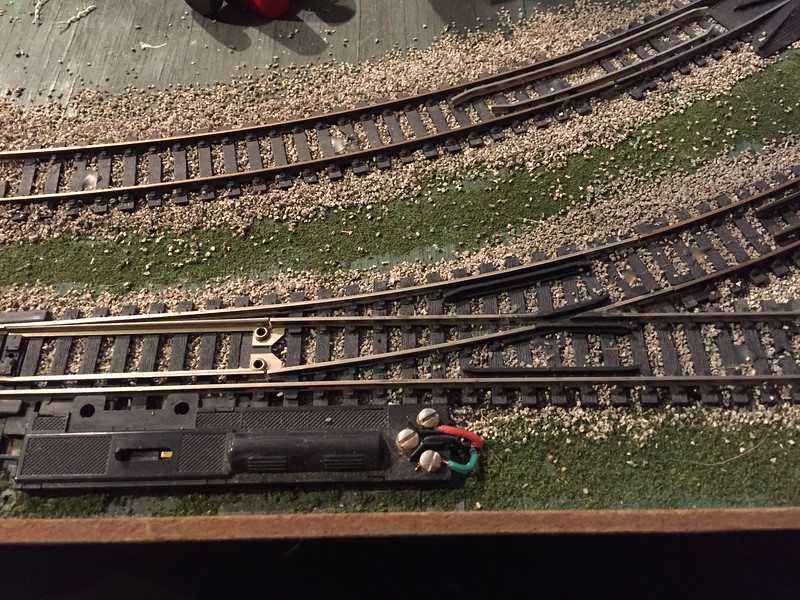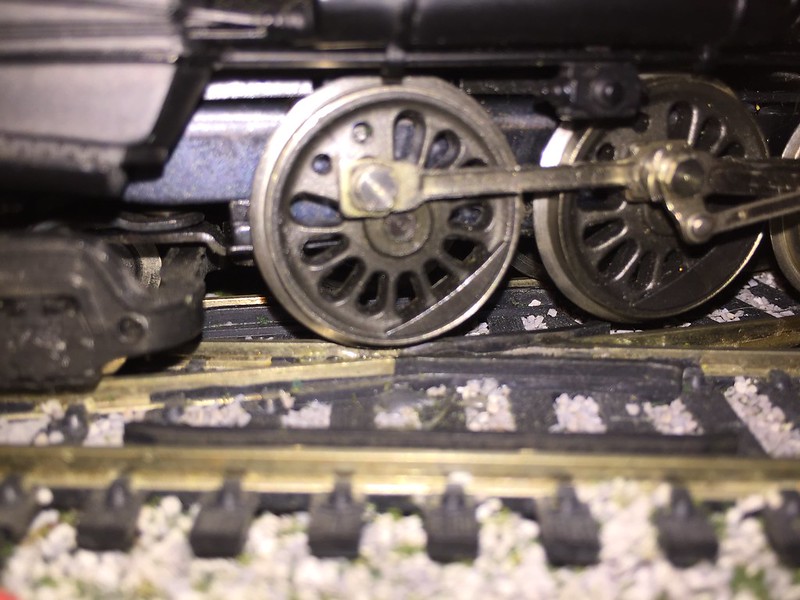KB02
Well-Known Member
I'm having a bit of a problem with a turn out that is somewhat difficult to describe. This is a left handed Atlas Snap Switch turnout (No, that's not the problem... well.. not the problem I am writing about, anyway...)

When my 4-6-4 Hudson takes the diverging route, the last set of drivers tends to get pulled up onto the inner rail/check rail just before the frog. The first two drivers don't have this problem, just the last set. Of course, not only does this sometimes cause derailments, but also the wheels hitting the rail causes a short.

Note the second driver being lifted high above the rail and not making contact.

It's almost like the check rail on the far side is just pulling the wheels too far over so they have no choice but the drive up onto the opposite check rail. I have checked everything for gauge (loco and track), and aside from the tracks on the diverging route being a little loose, everything looks good. I am tempted to trim off the plastic check rail on the far side to see if this cures the issue, but I'm worried that it might cause issues with other locos (The hudson is the only one that does this little dancing trick).
What do you all think?

When my 4-6-4 Hudson takes the diverging route, the last set of drivers tends to get pulled up onto the inner rail/check rail just before the frog. The first two drivers don't have this problem, just the last set. Of course, not only does this sometimes cause derailments, but also the wheels hitting the rail causes a short.

Note the second driver being lifted high above the rail and not making contact.

It's almost like the check rail on the far side is just pulling the wheels too far over so they have no choice but the drive up onto the opposite check rail. I have checked everything for gauge (loco and track), and aside from the tracks on the diverging route being a little loose, everything looks good. I am tempted to trim off the plastic check rail on the far side to see if this cures the issue, but I'm worried that it might cause issues with other locos (The hudson is the only one that does this little dancing trick).
What do you all think?

